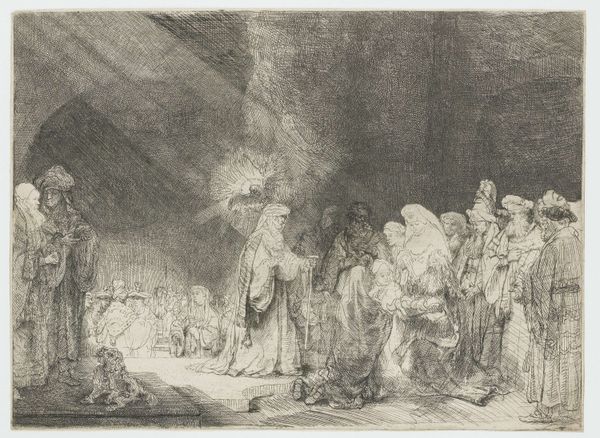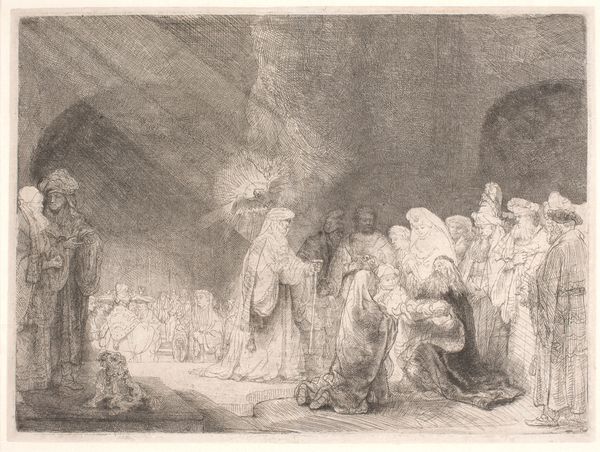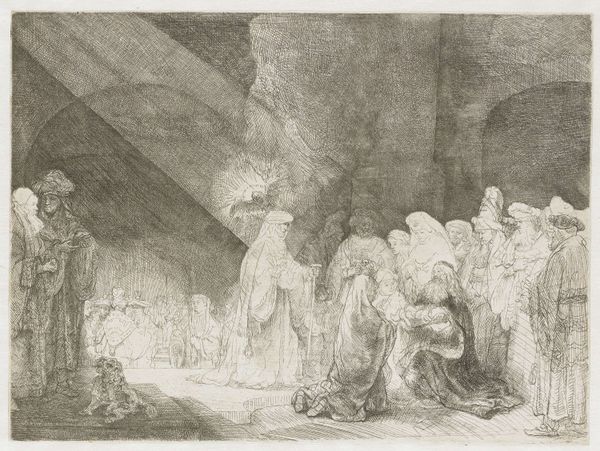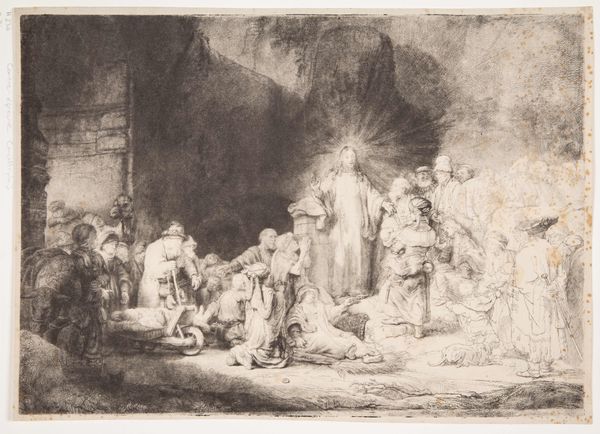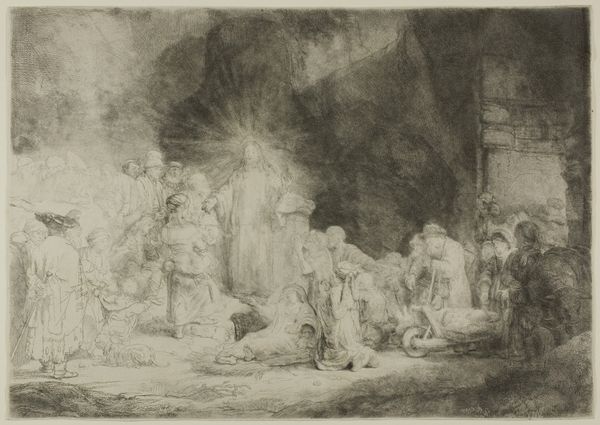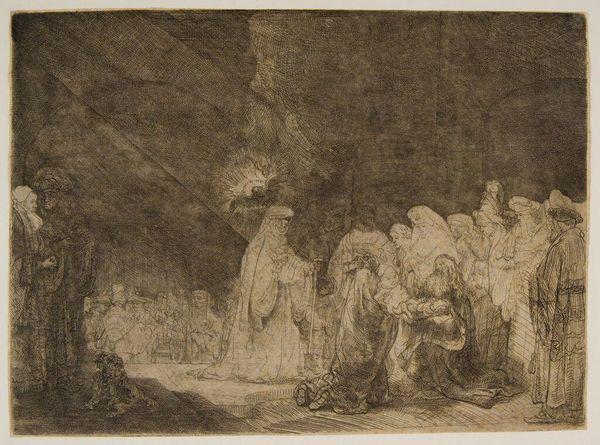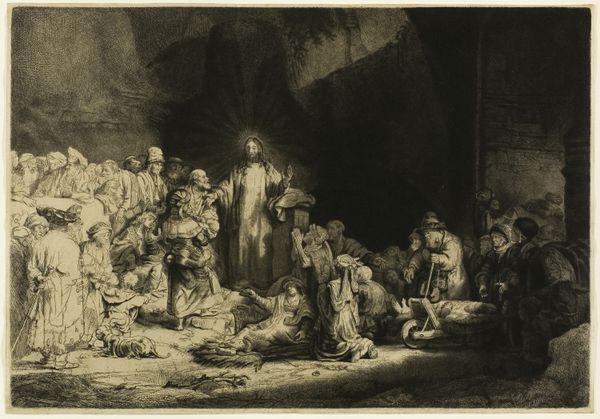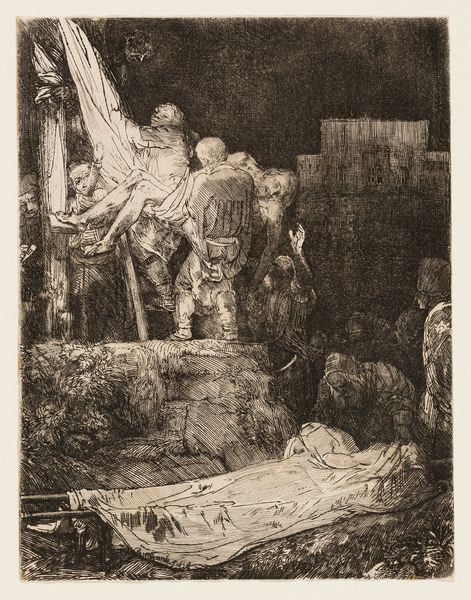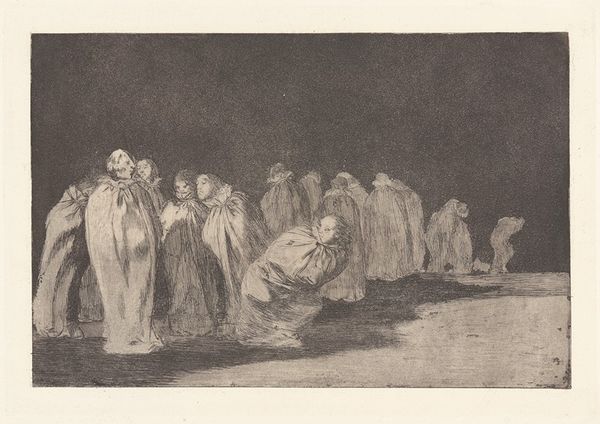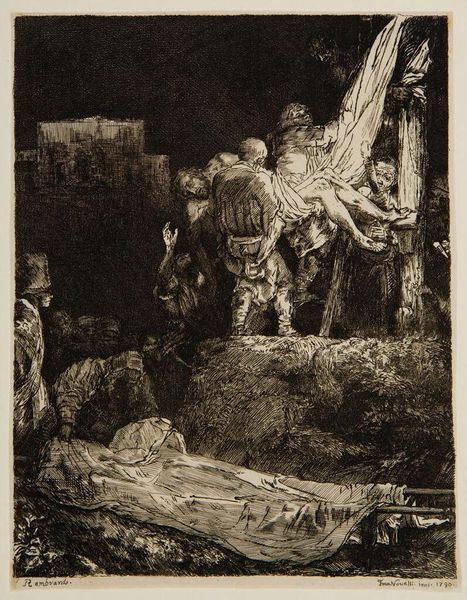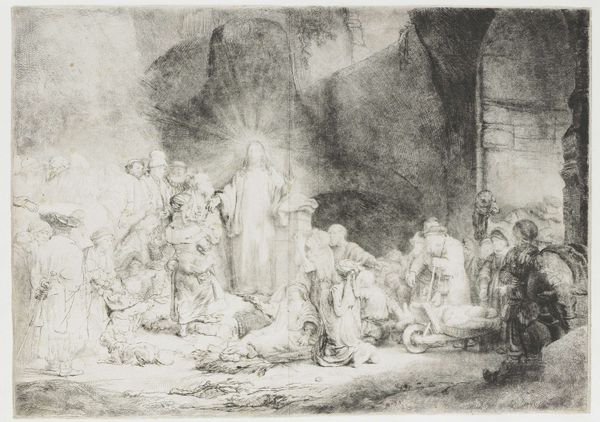
Dimensions: height 212 mm, width 285 mm
Copyright: Rijks Museum: Open Domain
Curator: Look at this fascinating print, "The Presentation in the Temple: oblong print" etched by Rembrandt van Rijn between approximately 1640 and 1906. It's currently held in the Rijksmuseum collection. Editor: It feels incredibly theatrical. The dramatic lighting against the deep blacks casts an almost ethereal glow upon the figures. I find the composition really emphasizes the emotional intensity of the scene. Curator: Indeed, Rembrandt was a master of chiaroscuro. Notice how the use of light guides our eyes toward the central figures—Simeon receiving the infant Jesus. But let’s also consider the role of prints during this period. They made art accessible, disseminating images and ideas across broader audiences than painted works would. Editor: Yes, the image itself, regardless of dissemination, possesses a unique internal logic. See how the linear details create a dense network, especially in the shadowed areas, adding to the solemnity? And the architectural structure, though dimly presented, enhances that air of hallowed respect. Curator: And what about the figures themselves? Each seems caught in their own contemplation, creating a community united by a shared moment. How would such a display of shared emotion have been received within a society that also knew public executions? Were emotions for the masses more about the fear of the state or was collective empathy building? Editor: Interesting tension. Now, look at the old priest, Simeon. The texture of his robes and beard contrast sharply with the smoother surfaces of Mary’s veil, drawing a visual distinction, highlighting the contrast between age and youth, tradition and new beginnings. That visual language tells quite the story, I think. Curator: I think you’re right to pick out those details, they are crucial for an understanding of Rembrandt's compositional thinking. Consider, too, that Rembrandt's portrayal of biblical scenes was rarely simply illustrative, but almost invariably charged with profound humanity. A move that resonated differently depending on which seat you occupied within society, wouldn’t you agree? Editor: Certainly, it humanizes this pivotal scene, yet retains its iconic status. The composition leads our eyes to every gesture of every character on the stage. It leaves us feeling profoundly moved. Curator: Exactly. And with that it becomes evident that Rembrandt, as both artist and storyteller, offers us layers of aesthetic experience and profound, historical perspective.
Comments
No comments
Be the first to comment and join the conversation on the ultimate creative platform.
